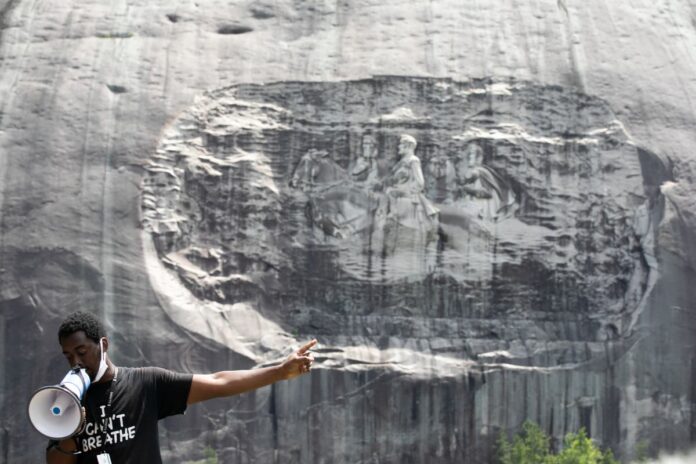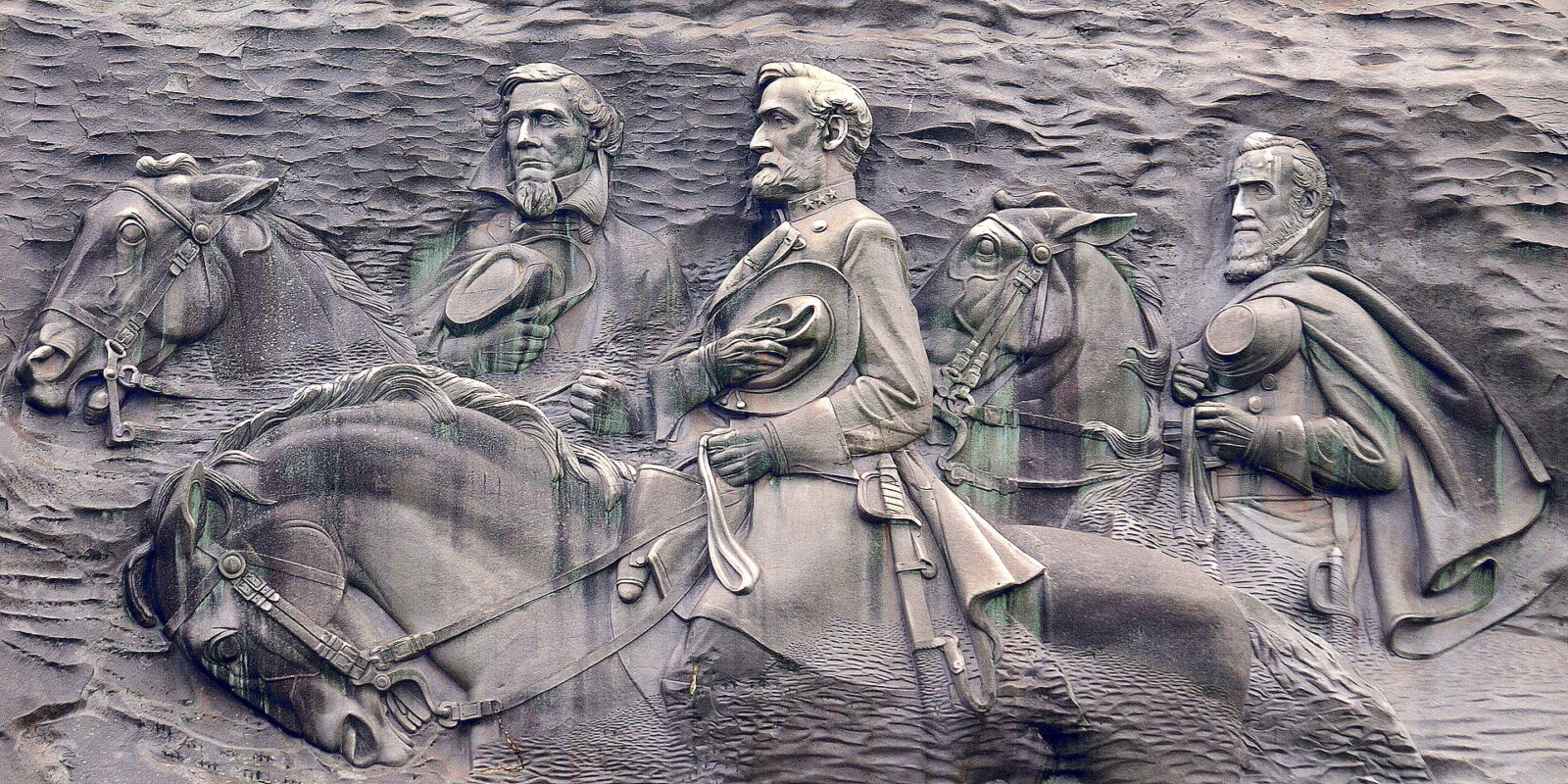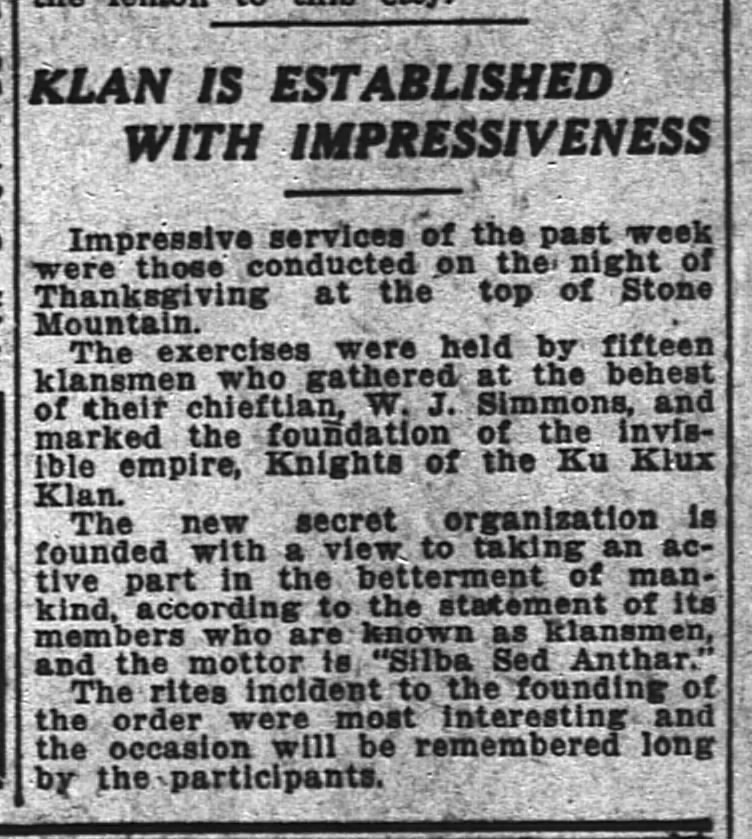
Georgia approves changes to Stone Mountain Park, Sanctuary of White Supremacy. The Board of the Stone Mountain Memorial Association has voted in favor of a series of changes to the park of the same name, which houses the world’s largest Confederate monument.
Approved solutions include the creation of an on-site exhibition that seeks to “tell the truth” about the park’s past, the relocation of the Confederate flag square to a less-visited area, and the development of a new logo.
Controversial carvings of Confederate leaders remain intact in Stone Mountain Park.
According to activist Richard Rose, Stone Mountain is the largest sanctuary of white supremacy in the history of the world, just 15 miles northeast of downtown Atlanta, The United States. Replete with representations of the Confederacy, including the monumental reliefs of southern generals carved into the northern slope of the mountain, flags, and other symbols, the state park has long been controversial.
After a year marked by massive protests against racial injustice, officials are once again debating the future of the controversial site, Sudhin Tanawala reports for the Associated Press (AP).
In a meeting with board members of the Stone Mountain Memorial Association (SMMA), CEO Bill Stephens proposed a series of interim changes that did not amount to removing the infamous carved monument in the park, according to Tyler Estep of the Atlanta Journal-Constitution (AJC).
Among Stephens’ proposals was the amalgamation of Confederate symbols in a 40-acre 3400-acre park.
Stephens also proposed relocating many of the Confederate flags that adorn the mountain trail, creating an educational exhibit about the Ku Klux Klan’s ties to the site, renaming the park to Confederate Hall, incorporating recognition of Native American burials within the park, and renaming the lake it currently has.
Stephens argued that the park must change to remain financially viable, but added that officials should not undo history, according to AP. (The park has lost a number of sponsors and suppliers in recent years due to its association with white supremacy.)

Activists have been calling for radical changes in the park for many years. Officials must work to balance these concerns with state laws that protect Confederate monuments. The board did not vote on any of the measures immediately. But Abraham Mosley, a public figure who was sworn in last week as the organization’s first-ever black chairman.
Over a century ago, Stone Mountain was home to the revival of the Ku Klux Klan. In 1915, at the foot of a granite mountain in a park, Preacher William Joseph and a group of racist vigilantes burned the cross and planted the seeds of a revival of the group of hatred that terrorized black Americans after the Civil War. This new iteration of the Ku Klux Klan has grown to include over 4 million secret members nationwide.
Today, the site’s legacy goes on inspiring white nationalists. Many Georgians are sure that the proposed changes are not enough to delineate the park’s role as a symbolic place for racist organizations.
Stone Mountain boasts the largest Confederate monument – and the largest bas-relief – ever erected: 190 feet by 90 feet, depicting General Robert E. Lee, Confederate President Jefferson Davis, and General Thomas J. “Stonewall” Jackson.

This carving and many other symbols of the Confederation were created and funded in the 20th century by groups of women and veterans of the South.
Caroline Helen Jamison Plain, the founder of the local branch of the Confederate Daughters Union, first proposed the huge Stone Mountain carvings in 1914, according to Emory University, which has a collection associated with the park in its library.
Due to budget constraints, work was delayed until the 1950s, when the Supreme Court decision in Brown v. Board of Education prompted Georgia’s separatist Governor Marvin Griffin to redouble efforts to perpetuate Confederate history in the state.
At his insistence, officials founded the SMMA and bought the adjacent land to create a park in honor of the Confederate, wrote Debra McKinney of the Southern Poverty Law Center (SPLC) in 2018. The monumental carved relief was completed and presented to the public in 1970.
Discussions about the fate of Stone Mountain begin against the backdrop of a new recalculation of the national symbols of the Confederation.
Last year, protests in the United States prompted officials and activists to remove or rename at least 168 Confederate symbols in public places. All but one of these removals came after a white cop killed a black man from Minneapolis, George Floyd, in May 2020, Neil Wigdor and Daniel Victor reported in the New York Times in February.
Stone Mountain’s symbolic and historical ties with white supremacist groups were very strong. Martin Luther King, Jr., in his famous speech “I Have a Dream”, named the place by name. When the civil rights leader came to the end of his speech in 1963, he described places where he envisioned a future free of racial injustice, including the “snow-capped Colorado Rockies” and the “winding slopes of California.”
Let freedom ring from Georgia’s Stone Mountain; let freedom ring from Lookout Mountain in Tennessee; let freedom ring from every hill and wormhole in the Mississippi. Let freedom ring from all sides.
























